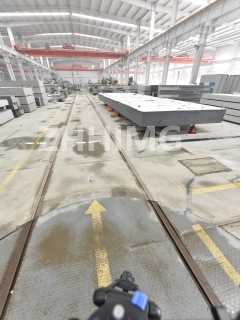Automatic optical detection of mechanical components is a modern technology that has been revolutionizing the manufacturing and inspection industry, offering numerous advantages to businesses that adopt it. This method of detection utilizes advanced imaging and data processing technologies to detect, identify, and classify mechanical components accurately and quickly. In this article, we will discuss some of the advantages of automatic optical detection of mechanical components.
Increased Accuracy
Automatic optical detection technology eliminates human error, which increases the accuracy of the results generated. The human eye is not capable of detecting small defects such as cracks, scratches, and other deformities that can affect the performance of mechanical components. Automated optical detection systems use advanced algorithms to scan and analyze various features on a component, such as surface topography, color, shape, and orientation, giving accurate and reliable results even in nonuniform surfaces that would be almost impossible to detect using traditional inspection methods.
Reduced Inspection Time
Automated inspection machines offer the advantage of significantly reducing the time it takes to inspect mechanical components. With traditional methods, a human inspector would need to spend a considerable amount of time manually examining each component to check for defects. In contrast, automated optical detection systems can inspect multiple components in a short time, increasing production efficiency while reducing labor costs.
Early Detection of Defects
An automated optical detection system can detect defects that may be impossible to detect using other methods, even in the early stages of production. Early detection of defects is incredibly vital as it ensures corrective measures are taken before the products are released into the market. With increased accuracy, automated optical detection systems can detect broken parts, manufacturing errors, and other defects early in the production process, reducing cost, and time spent fixing the issue.
Cost-Effective
Investing in an automated optical detection system can be a great financial decision in the long run. Initially, the cost of implementing an automated inspection system may seem high, but in reality, it can save a business a lot of money in the long run. It eliminates the need for manual labor, reduces production downtime, and minimizes the cost of remanufacturing faulty components.
Improved Safety
In traditional methods of industrial inspection, workers are exposed to hazardous conditions resulting from the use of heavy machinery and handling of sharp-edged components. With automated inspection systems, workers' exposure to risks is reduced as the machines do all the work, decreasing the likelihood of accidents.
Conclusion
Overall, the benefits of automated optical detection of mechanical components are numerous. It guarantees accuracy, improves efficiency, offers early defect detection, thus decreasing the overall production cost. Moreover, it improves safety and worker wellbeing, while increasing the quality of products. As such, businesses across different industries need to embrace this technology if they are to stay ahead of the competition and meet the growing demands of their customers.
Post time: Feb-21-2024

